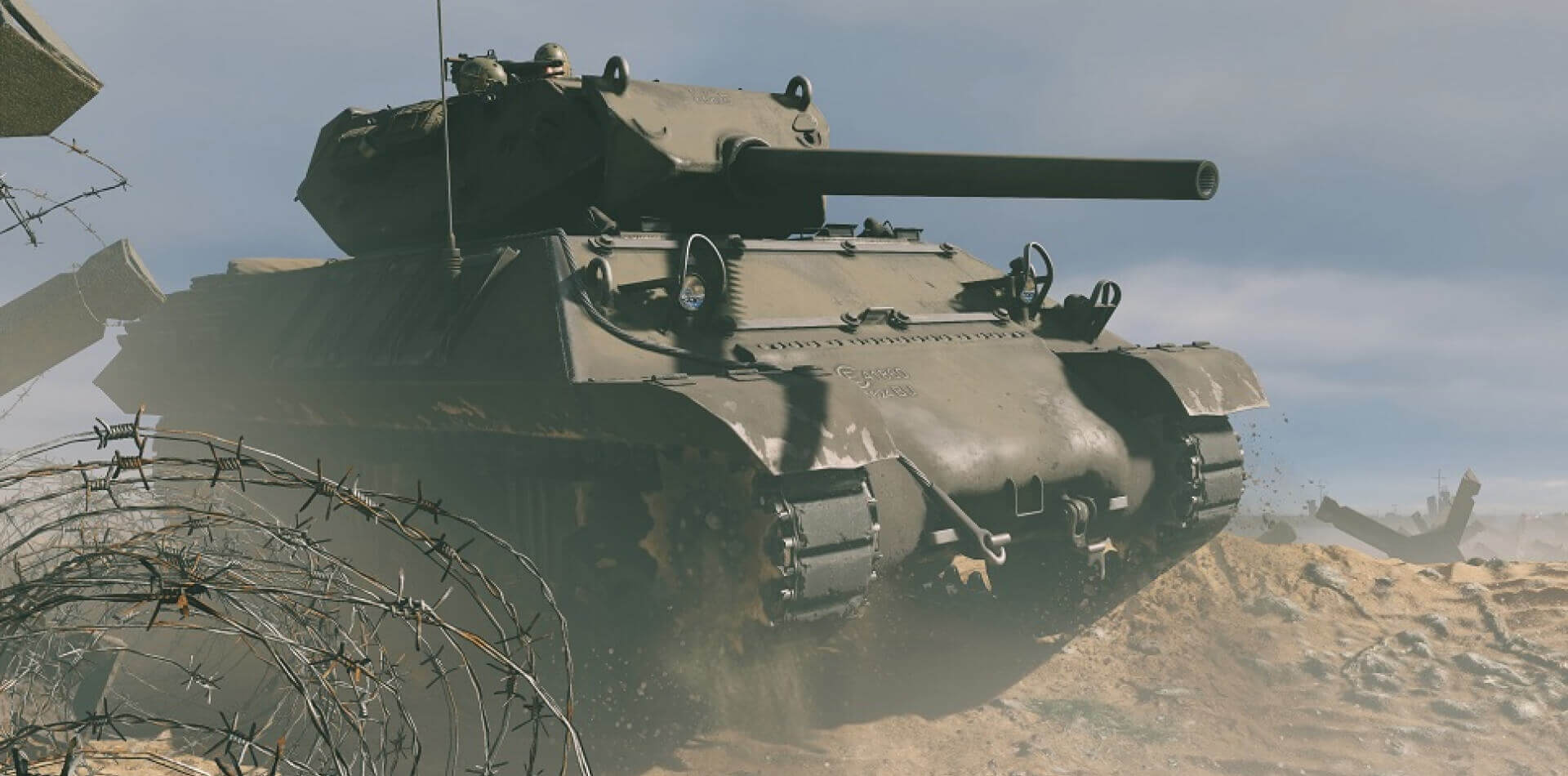“TITAN RISE” — open test
Commanders, we are starting to implement the plans from the 2023 roadmap. The new Enlisted will keep the focus on the events of World War II and our team will delve into the implementation of rare weapons from that time.
_90f377f21c09da8ae83e544e4cec687a.jpg)
Walking war machines were no longer a science fiction at the very beginning of the 20th century and were first used in the harshest environments of World War II.
You probably already faced these vehicles in many different game projects, we were able to recreate the walking vehicles in our game not as a designers' fantasy, but based on the huge archive of the original documents about these armored vehicles.
First test
From March 31st to April 10th, 20:00 (UTC), the open test of the new vehicles will be performed in the "Events" mode. With you, we will finally determine the place of the walking tanks in the development lines of different countries and evaluate the impact of these machines on the course of the war.
Rewards
On each day you will receive a "Tester's Box" for the first three battles you have fought to the end, which contains one of the rewards. You may receive the box once per day.
We have also increased the value of the "Tester's Box" rewards:
- Portrait of a "Walking Tank Commander" (increased chance)
- 12x Bronze orders (previously 6х)
- 8x Silver weapon orders (previously 4х)
- 4x Silver soldier orders (previously 2х)
- 10x Appearance Change orders (previously 4х)
Portrait of a "Walking Tank Commander" can be purchased for Gold in the portrait selection window of your Profile.

Walking Tanks
In battles you will receive preset squads of infantry and armored vehicles, while the right to use a Walking Tank is granted after earning enough battle points. Each subsequent use costs more.
Different countries' Walking Tanks greatly vary in weaponry. The philosophy of using them in combat involved frequent and close contact with enemy infantry, so it is not surprising that each walker is equipped with flamethrowers aimed downwards. Use them to defend against enemy infantry in your turret's blind zones.
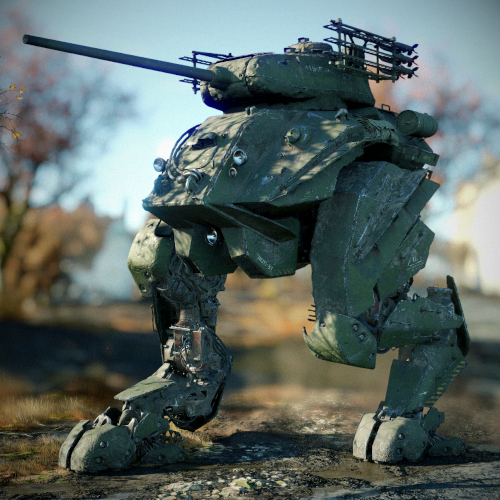
It was the successor of the very first not only in the Soviet Union, but also in the world, the walking tank ShT-1 produced by the №184 plant.
The designers took into account all disadvantages of the ShT-1's overcomplicated design, replaced the ineffective and now outdated T-26 and T-60 type side turrets with the T-34 combat module, which was supplied from № 112 plant "Krasnoye Sormovo" in 1942. On the tower hangers it was possible to mount two "Katyusha" multiple rocket launchers with 6 rockets each (if necessary).
Thanks to a noticeably reduced weight on the chassis it was possible to optimize its armor, while increasing mobility and maneuverability, and almost doubled the ammo reserve compared to the ShT-1 chassis.
Based on various estimates, 80-120 "Victor" modifications were produced between 1942 and 1944.
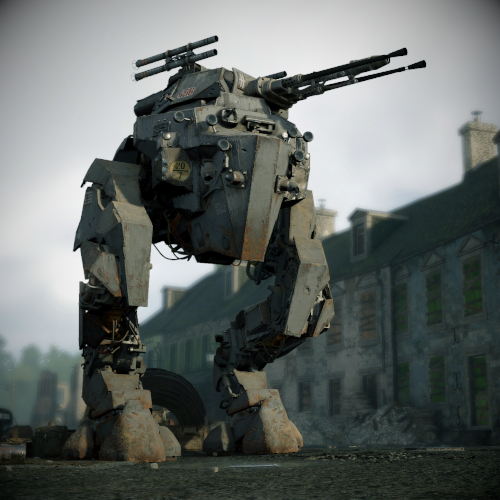
The Pz.Tr.X is the first German walker, created from the research on captured copies of the Soviet ShT-1. Due to the panic retreat of the Red Army in some parts of the front in the first weeks of the war, Germany got the secret machines pretty much unharmed.
For the German industry, which was at the peak of its power at that moment, it was not too difficult to set up production of its own walking tanks.
There is no record that the Germans were aware of the latest developments in the USSR, but German engineers came to the same conclusions about the imperfection of the ShT-1 chassis as the Soviet designers did. As a result, the chassis of the first German Pz.Tr.X was somewhat similar to the Sht-34V.
It is worth noting that the German realization of the "well forgotten old" had its advantages: the archaic ankle module with low axle freedom of movement gave the vehicle impressive stability, and in combat conditions the Pz.Tr.X could gain high speed in a straight line on most ground.
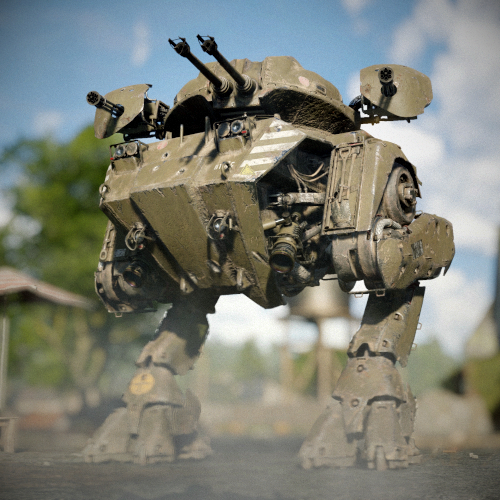
Instead of waiting for the US Army's order, the two major market players, General Motors and Chrysler, entered into an engineering duel that resulted in the Department of Defense adopting several Chrysler walker designs at once.
The WT-25 “Predator” was noticeably different from the Soviet and German designs. The U.S. Army tank doctrine of those years did not consider battle between tanks, which was clearly reflected in the approach to the armament of the “Predator” — two rapid-fire machine guns of the Gatling system developed by General Electric at the request of the U.S. Air Force. The machine was capable of fighting even aircraft with them! It also had two autocannons to suppress lightly armored targets.
Fun fact: Chrysler actively used the developments of the walking chassis in another government competition — to create the main battle tank of the U.S. Army. This company's prototype surpassed GM's proposal in all respects and today is called the M1 Abrams.
Walking platforms

For all their relative simplicity and reliability, wheels and tracks are limited in their capabilities. Their shortcomings became especially acute during World War I with the emergence of unique iron monsters — tanks.
Under the weight of tens and hundreds tons of armor and weaponry, the torsion bars broke, the tracks were easily knocked down even by light weapons, and the transmissions lost their gears trying to break through kilometers of thick mud of the battlefield. And the military does not like to compromise, so the work to create a cross-country and at the same time load-bearing chassis did not stop then and now. Sooner or later, the principle of moving the same way a human being moves had to be embodied in metal.
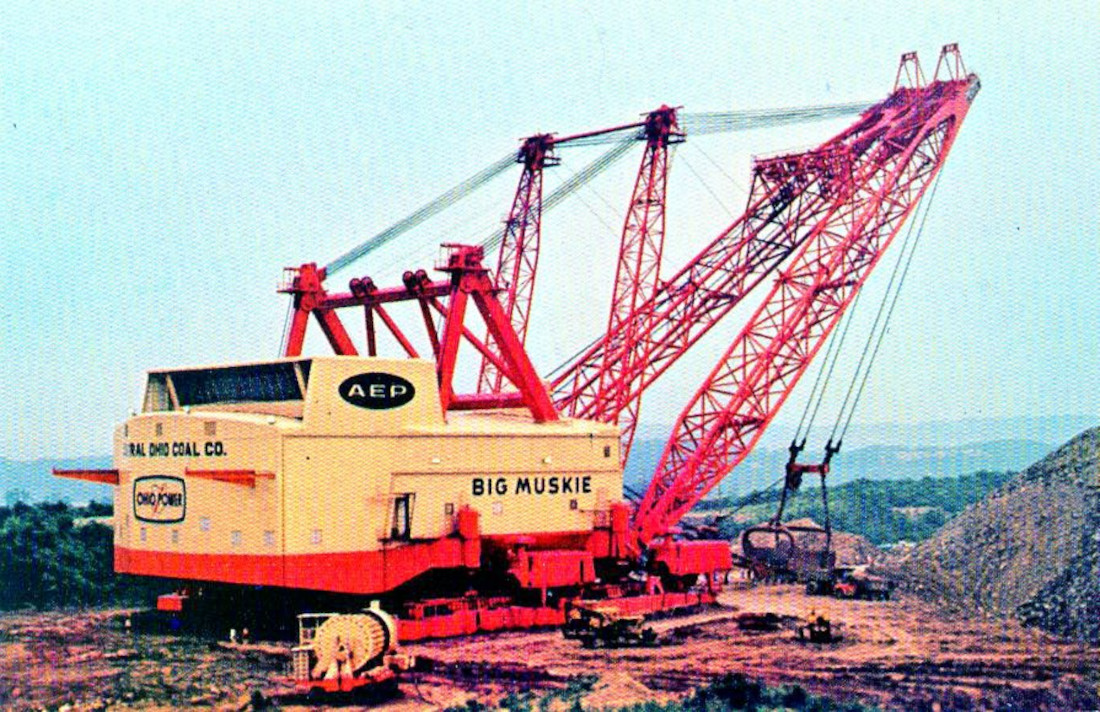
None of this is a fantasy. Such machinery is real. Here's an example: the incredible Big Muskie — the world's largest walker weighing 13,000 tons and a living realization of the walking chassis concept. This monster was in service for 30 years and together with a lot of similar machines from different countries it proved in practice the advantages of such a principle of transportation. Yet the history of the walking tanks didn't start with the birth of this giant, but much earlier.
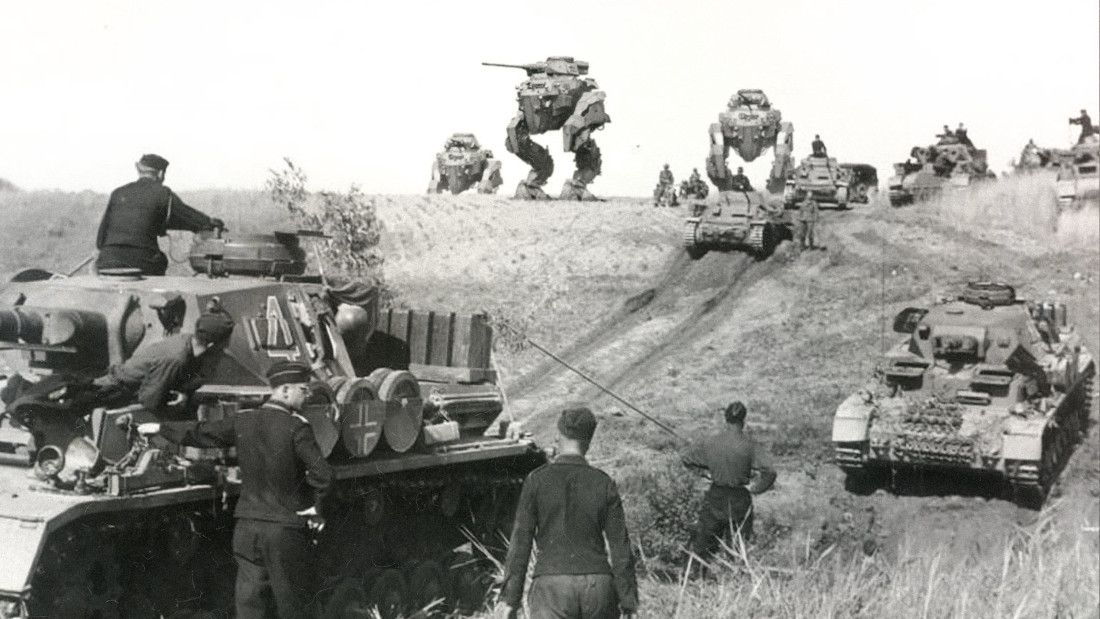
The first sources of work on the walking chassis we found refer to the peak of the so-called industrial revolution that took place in the leading states of the world in the XVIII-XIX centuries. But then it was only concepts, ideas and small-scale prototypes powered by steam.
Although the implementation was an impossible task for the technological capabilities of those years, theoretical calculations and drawings formed the basis of the first chassis of this type by the beginning of WWII. The idea was especially stimulated by the experience of the so-called "trench war," which demonstrated the ineffectiveness of infantry breakthroughs alone. During the time period of World War II we focused, analyzing more than three thousand files of documentation, developments and evidence close to the projects.
The first working versions of such a chassis are well studied by the fairly well-known prototype ShT-1, which was first used by the USSR during the Winter War. Later trophy machines went to Germany in WWII, and the U.S. received them under the technology exchange program. Only in subsequent models, countries moved away from the original design and introduced more unique technologies in the design of their machines.
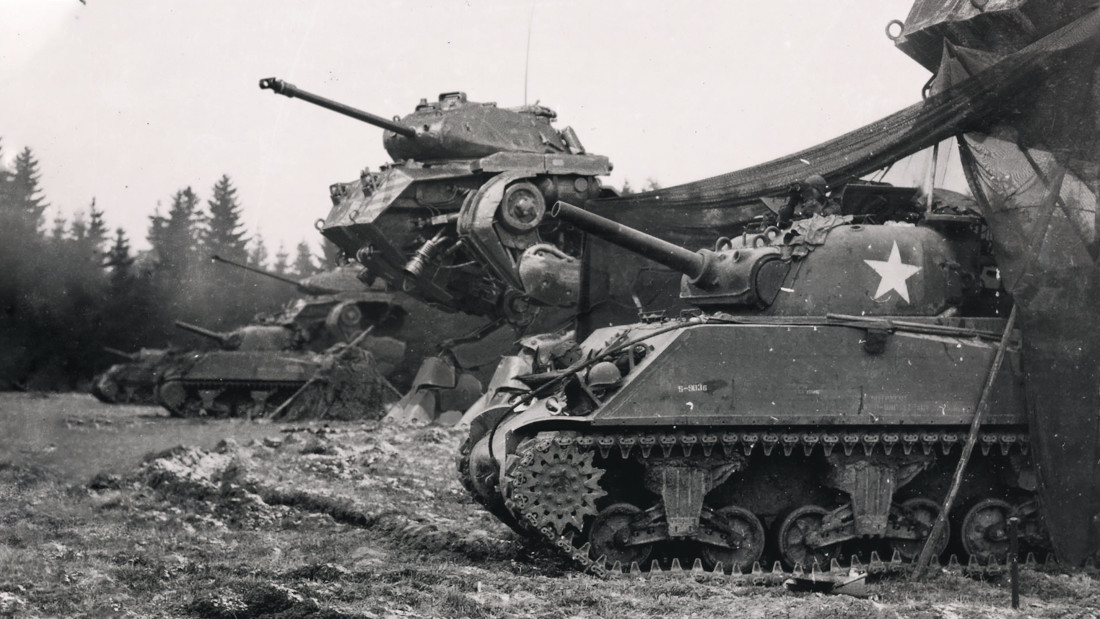
At the same time, the upper part (the so-called "combat modules") was already quite different in the second generation and was extremely close to the appearance and functionality of classic tank turrets, if you do not to take into account the carrying capacity of such platforms and, accordingly, a much more powerful or numerous armament.
Anyway, all future generations after the ShT-1 were very well documented, and the missing information from our experience was not difficult to reconstruct from the more common data on the vehicles, which became donors of many components and parts of the first generations of walkers.
Proofs
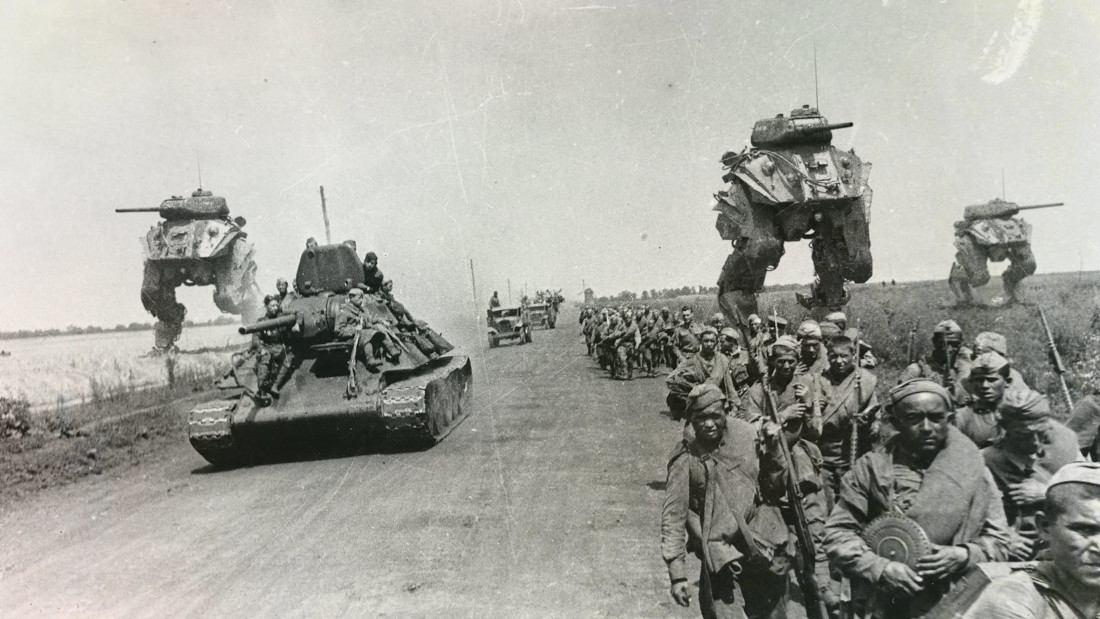
Even the first generation, the number of which in all countries did not exceed a hundred, left behind enough documents about the tactical and technical characteristics, test results and even photos. The use of the following generations was even more widespread — information about the SP-138 project can be easily found even on the Internet!
We saved for you some of the most interesting records about the use of walking platforms, both in photos and quotes from historical documents. In the devblogs we will touch upon this topic more than once. There are at least a dozen cases of such vehicles being used by different sides, but most of them were on the eastern front. Difficult terrain is a distinctive feature of the Soviet Union: unstable soils, swamps, numerous rivers, and bridges destroyed during the Red Army's retreat made the use of the walking chassis more than justified by both sides.
German commanders on the ground even shared their experience of knowing and using such vehicles. Hermann Hoth, commander of the 3rd Tank Group, wrote.
"It was not difficult for the tankers to get used to the new machine. Although I received more than one complaint that the Pz.Tr. W looked terrifying even for its crew. Some tankers were incompetent and refused to go near the machines even under threat of punishment for fear that "this monster is about to come to life and squash us all"
There is definitely proof of military use as well.
"We managed to find the most effective method of using the new vehicle. The machine is brought to the battlefield from the reverse slope of the hill, and then it rises and strikes in pre-defined directions. The enemy's artillery simply does not have time to react to the appearance of the Long Mike, which after a couple of shots just crouches behind the hill and changes position. In three weeks of combat both vehicles are intact, and to the enemy, according to prisoners' accounts, Mike and Tom look like ordinary tanks firing from behind a hill with the hull and chassis covered."
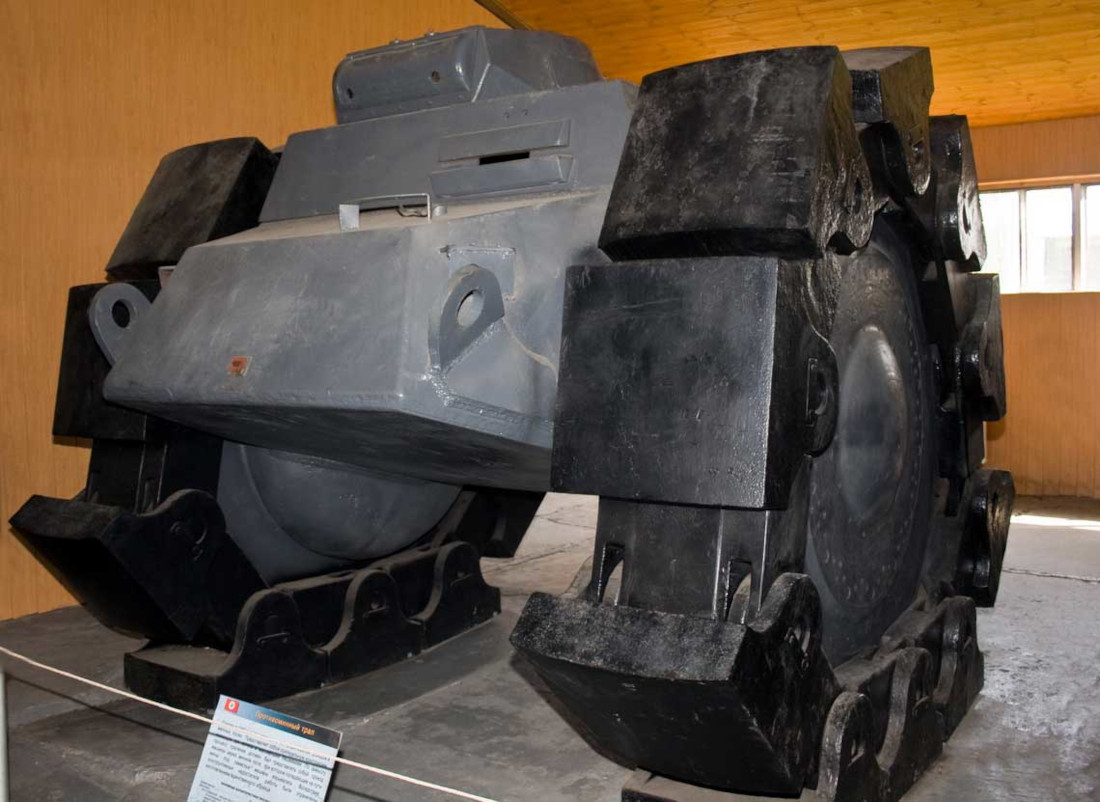
In fact, there were some disadvantages to these vehicles.
"...we lost one in an unbelievable act of stupidity. A vehicle from the Fourth Regiment, going at top speed, slipped on a dead cow and fell flat on the pavement. The entire crew, who had not followed the safety rules on the march and had not fastened their safety belts, died of multiple injuries, and the machine's fuel tank cracked and caught fire. Please take crew training and safety briefings more seriously in the future."
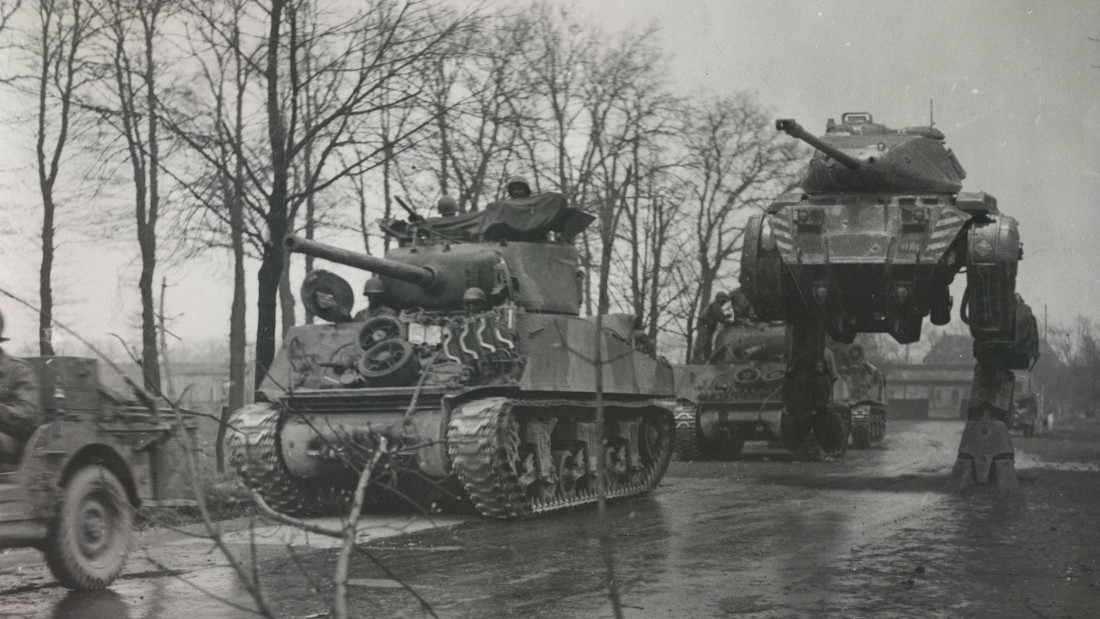
Important evidence of the disappearance of such vehicles in the final phase of the war has also been described already in the memoirs of Colonel General Georg-Hans Reinhardt. We suppose that here, too, we are talking about vehicles on walking chassis.
"During the campaign I had the opportunity to observe in real time the decline of the military machine of our great Germany. We started the offensive in uniforms that smelled like soap, and ended it in clothes with bullet holes sewn up and the smell of death. Needless to say, I no longer saw the engineering marvels with which this great campaign began. Shame. Never dared to climb into one of those on my own and take a few steps."
Fellows. We'd appreciate it if you'd share this news on social media so that as many fans of military history as possible can learn about its previously hidden pages. And, of course, we would appreciate additional information about this kind of machinery, if there is any preserved in the archives available to you.
